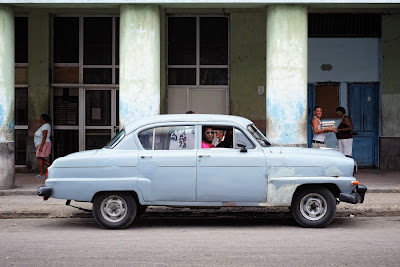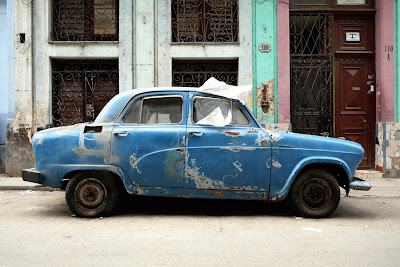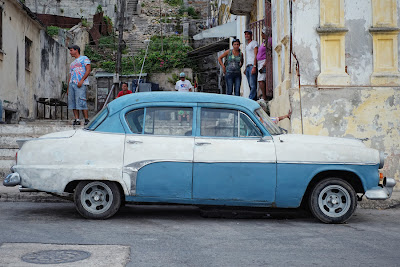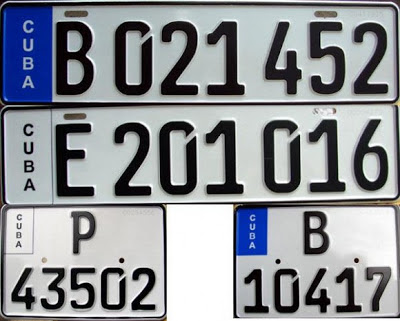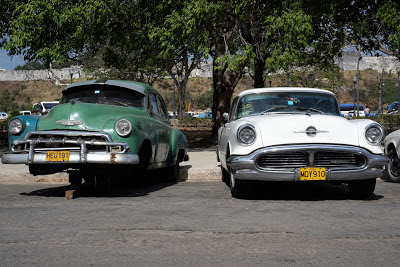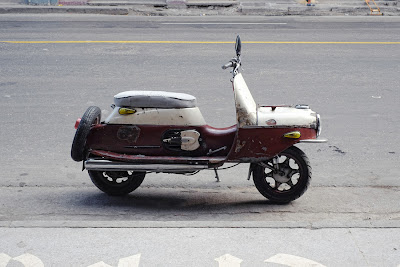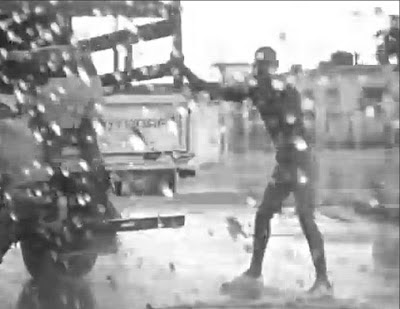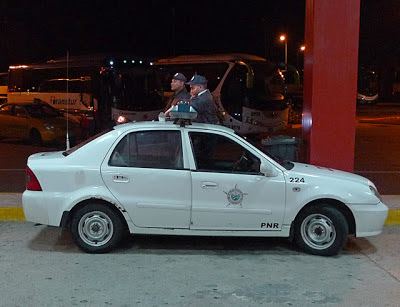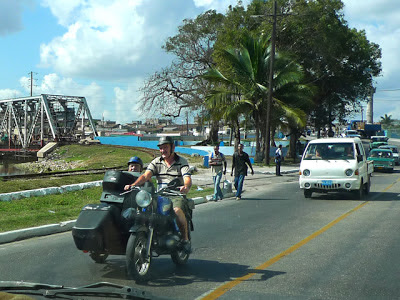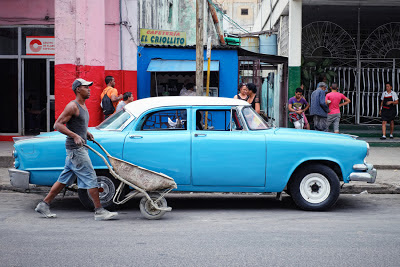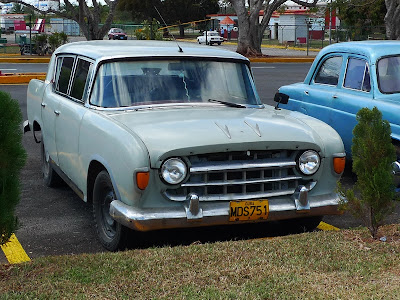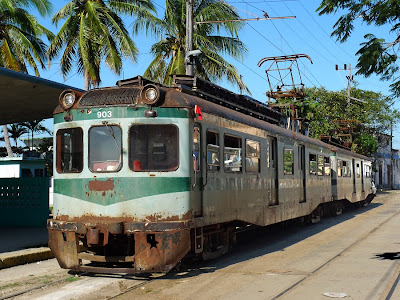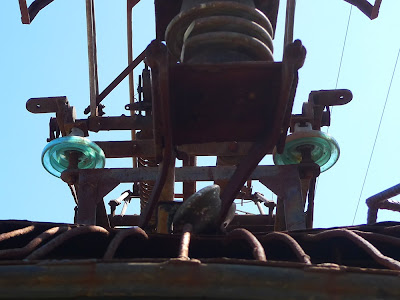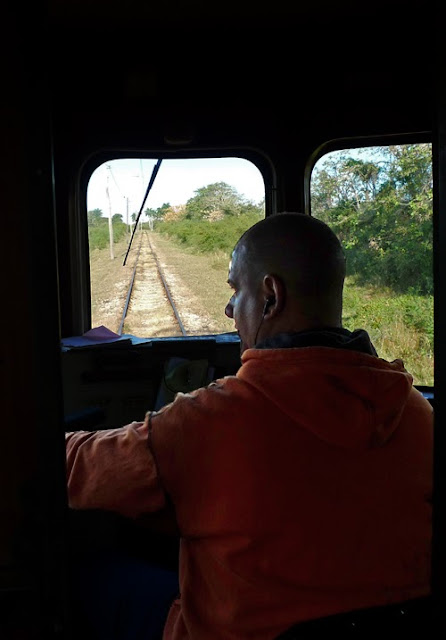 |
| Autos Camayd in Holguin was among early Toyota dealers in the western hemisphere. |
I've saved my favourite for last. The Asian entry in our three-continent collection is a Toyota Land Cruiser FJ25V that in 1958 was Raúl Castro's staff vehicle in the Sierra Cristal. The man who now is president of Cuba was leading a force of 50 men to open the Second Front "Frank Pais," named for a young revolutionary martyr.
 |
| Land Cruiser FJ25V served Raúl Castro in Sierra Cristal fighting in 1958. |
According to one account, the first Land Cruisers were exported to Pakistan in 1954. Another source suggests exports didn't start until the 1955 introduction of the much-revised 20-series Land Cruiser, with Brazil and Saudi Arabia among the first destinations.
Regardless of the date, early sales were modest. But Toyota pressed on and within a few years had added Burma, Australia and other nations to its markets. In 1958, the Land Rover brand arrived in the United States. Reportedly, just one was sold that year.
Raúl Castro's Land Cruiser was reportedly seized from a sugar plantation owner. From the badges still attached to its hood, we know it was imported by Autos Camayd, a Chevrolet dealership in Holguin that had picked up a Toyota franchise – perhaps in early recognition of the Chevy-Toyota symmetries.
| My old pickup: in the army now? |
The engine, if the original remains, is a gasoline inline six-cylinder rated at 105 horsepower. The manual transmission, unlike the Jeep gearbox, has no separate low range. The torque of the 3.9-litre Toyota straight six was felt sufficient to power the FJ25 through deep mud and heavy snow without the low gearing.
Regardless of whether this was the first Toyota to serve a rebel army – and I think it could well have been – we know it was not the last. In the decades since the Cuban revolution, Toyota Hilux and Land Cruiser pickups, often with machine guns bolted to their beds, have carried militia forces in Africa, Asia, the Middle East. Insurgents like them for their strength and reliability and even for the big letters across the tailgate that have helped turn Toyota into a cult truck brand in so many places.
In my day job, I wrote this column about the rebel Toyota phenomenon and the strange possibility that even a Toyota pickup I once owned may have been conscripted.
Raúl Castro's Land Cruiser isn't as prized by collectors as the later FJ40 , and the purists are a bit sniffy about the quality of its restoration. Me, I'd take it in a heartbeat.
But given its significance to Cuba, and its even larger place, perhaps, in auto history, it belongs in a museum. Which is exactly where it is.
But given its significance to Cuba, and its even larger place, perhaps, in auto history, it belongs in a museum. Which is exactly where it is.

